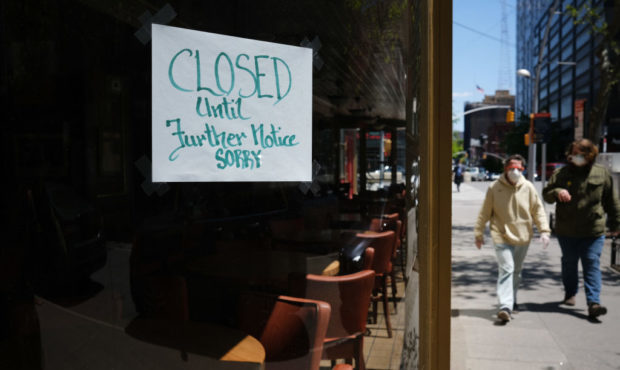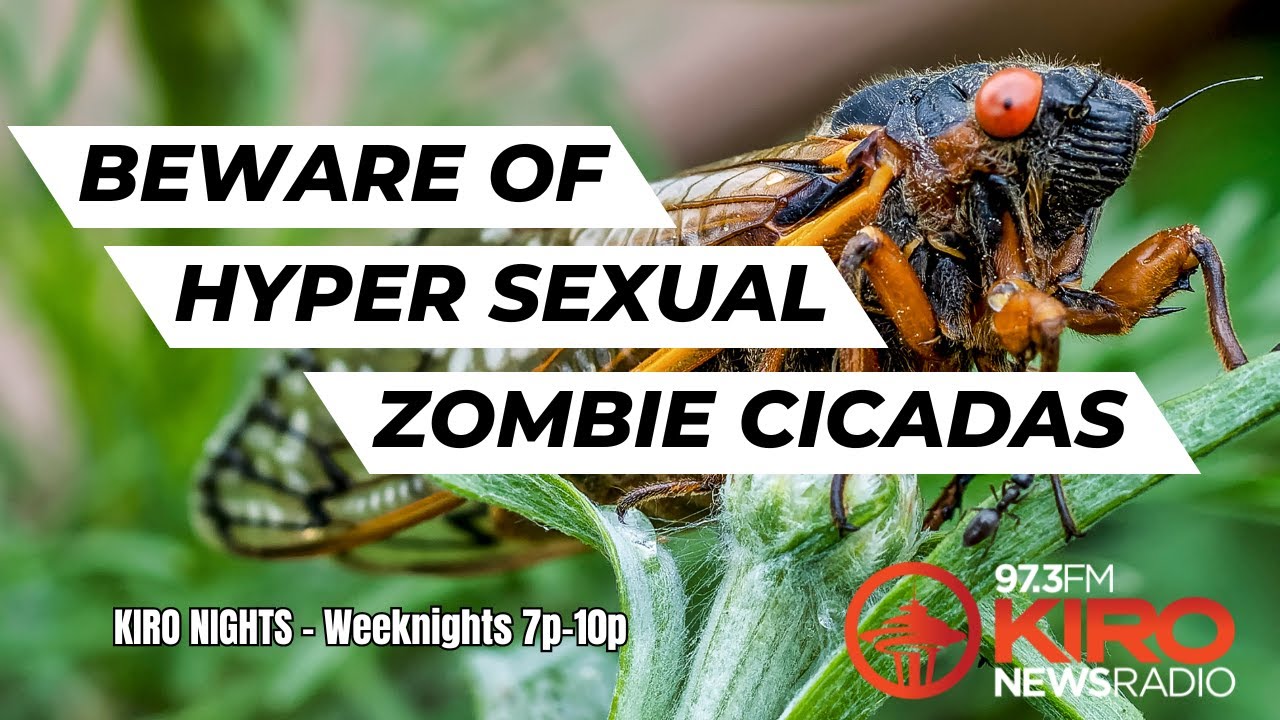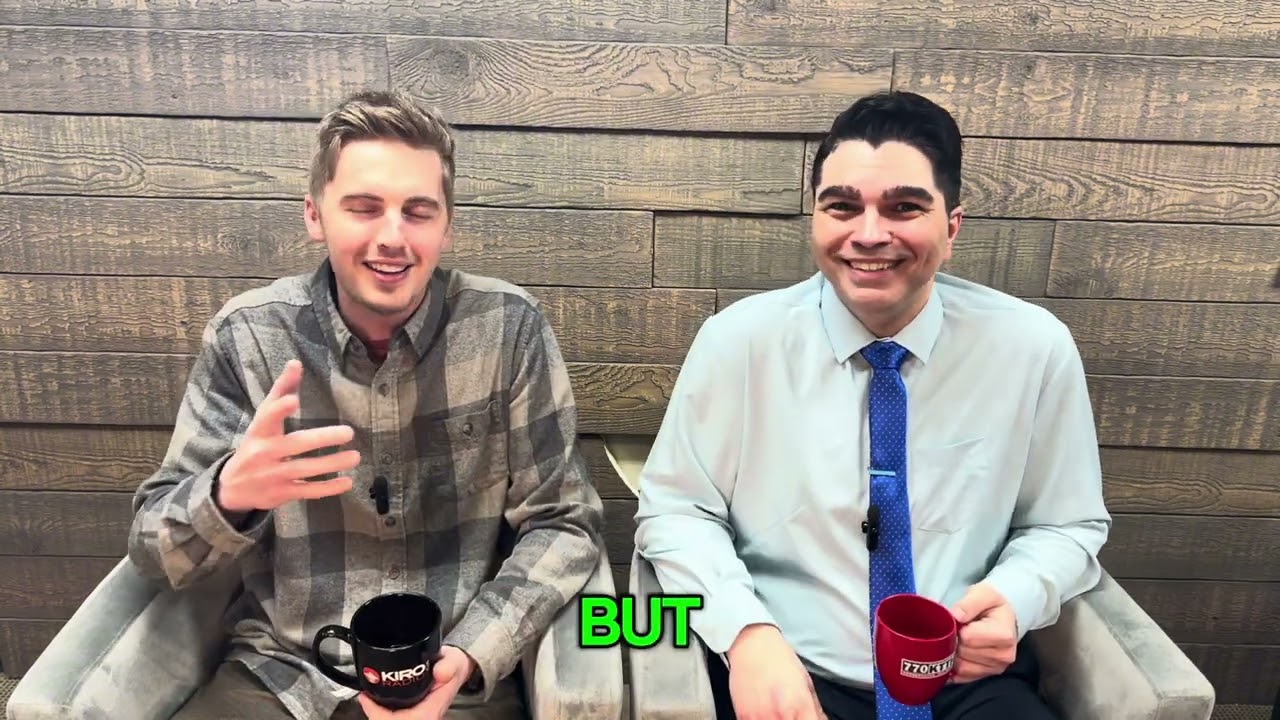Examples of resilience from US history serve ‘as a refuge’ in present times
Jun 17, 2020, 5:20 AM

People walk through a shuttered business district in Brooklyn on May 12, 2020 in New York City. Across America, people are reeling from the loss of jobs and incomes as unemployment soars to historical levels following the COVID-19 outbreak. (Photo by Spencer Platt/Getty Images)
(Photo by Spencer Platt/Getty Images)
In difficult periods, it can often be helpful to look back at history and find a time when people have dealt with similar problems, to see how they came out on the other side.
The economic fallout caused by COVID-19 worldwide has been said to be the worst since the Great Depression. Add to that the protests, growing disbelief in the U.S. government, and you’ve got what KIRO Nights host Mike Lewis referred to as a “crisis within a crisis within a crisis.”
But, America has been in a similar spot before.
Timothy Egan, Pulitzer Prize winning reporter and columnist for the New York Times, and National Book Award winner for The Worst Hard Time: The Untold Story of Those Who Survived the Great American Dust Bowl, joined KIRO Nights to share lessons from a tough time in America’s history.
“It really was the nadir of American history,” Egan said about the Great Depression. “Not only did you have 25% of people out of work, but you had no safety net.”
Right now, there’s unemployment compensation, social security, price supports for farmers, and food stamps.
“In the 1930s, these people were eating road kill. There were people dying of hunger. There were bread riots,” Egan said. “And then on top of it all, and this is what my book was about, you got what one farmer called ‘the hate of all nature.’ You had climate change in miniature. And five states in the southern plains essentially turned on their inhabitants. They would have these monster storms, 100 miles wide, mile high, looking like a mountain range on the run that would snuff out life and lightness itself.”
Egan says during the Dust Bowl, it could be a bright sunny afternoon, then suddenly so dark you wouldn’t be able to see your hand.
Parallels between now and then
“I have always been someone who likes to kind of take refuge in history, because it’s instructive and informative for the present day,” Egan said. “But in The Worst Hard Time, it just blew me away at what we had been through because there are many parallels today, but also it really was ‘worst’ in the sense that we didn’t have some of those things in place that I said.”
At the end of April 2020, unemployment in the United States was near 15%, which is historically high. In the “Great Recession” it was only about 10% at its peak, Egan says, and in the Great Depression, 25% of people were out of work.
“I think by the end of the summer you could have something approaching Great Depression numbers, which is 25% of the workforce,” Egan said. “In this case, it will probably be 60 plus million Americans.”
“The difference between then and now is we, because of that, we put in, as I mentioned earlier, a bunch of sort of safety net things to ensure that people didn’t actually starve,” he added.
Crises during an election year
The other major comparison comes in form of it being an election year.
“You’re going to hear a lot about Herbert Hoover in this election year of 2020 because it’s very instructive, both for the Biden campaign and for the Trump campaign,” Egan said.
The Great Depression got worse on Hoover’s watch, and rather than facilitate a wholesale government, he told the nation it would go away.
“Probably one of the most famous quotes in American history was Hoover’s quote several months before the election, when he said, ‘Prosperity is just around the corner,'” Egan said.
“Now you’re seeing here a little bit of that with President Trump right now where he’s saying that the economy is … going to spring back and … by the fall we’ll have the best economy ever,” Egan pointed out. “Well, I mean, be careful when you say those things.”
Hoover also used the military on peaceful protesters, which Egan said was one of the worst things he did, and we’ve recently seen Trump threaten to do as well.
“People really felt hopeless and desperate and Franklin Roosevelt offered them hope and some way out,” Egan said, in contrast to Hoover. “So we hear a lot of that framing … in this upcoming election.”
“The offering of hope is to say there’s a way out. You can’t just say things will get back to normal. You can’t just say America will be great again. You have to offer specific solutions and you have to bridge the gaps,” Egan added.
A critical part of FDR’s success in historic rout of Hoover was offering a road map to get out, to improve.
“[FDR] did try to save the natural world at the same time time he tried to save the human world, which had collapsed,” Egan said. “And that’s why he had a historic re-election four years later.”
Fix the pandemic to fix the economy
Turning to the economy, Egan says fixing the pandemic is critical for a strong return.
“You won’t be able to fix this economy unless you can fix the pandemic, … you can have all the stores in the world open up, the people aren’t going to go to them. You can have all the stadiums in the world opened up, all the restaurants open up, people aren’t going to go to them unless they feel like they’re not going to get sick,” Egan said.
Every country that’s had success reopening has shown you need to have a contact tracing system in place so you know who has the virus now and whether it’s a risk to go to a certain restaurant, for example.
“Use the power of the government, not just to send checks and keep people in place, but to try and find a way to make people feel safe going back out into the community,” Egan said. “And that’s an echo of the 1930s.”
“Roosevelt used the power of the government to hire people, put them to work, doing positive things that will stitch the communities back together again,” Egan added.
The lonely depression
While there are safety nets and securities in place now that weren’t around in history, there are also unique challenges in the modern world that make this hard time different, but still hard.
“I think the difference, and this is what makes this moment so hard, even though we have some of those safety nets in place that I mentioned so that hopefully people aren’t going to be starving in their homes, people call this the lonely depression,” Egan said. “Because even in the Great Depression people went to baseball games, paid 25 cents to go watch Babe Ruth hit a homer, they congregated in bars and taverns, Prohibition had ended so you could go into a pub and get a beer for a quarter and meet your buddies even if you were out of work.”
People still went to church, particularly in the Great Plains area.
“You can’t do any of that right now. So that’s why people call this lonely depression,” Egan added. “And that’s why these these indices on mental health that you’re seeing are off the charts.”
Physically, economically, the 1930s were tougher, Egan said. But now, you add the loneliness, the isolation, and it’s in some ways harder because of that.
Egan acknowledged there was mental distress during the Dust Bowl and Great Depression as well. There was a constant barrage of storms, with no end in sight, and it continued for years.
“The mental distress thing is huge and can’t be overlooked,” Egan said. “A good leader, again, gives you some hope. There’s a great quote from Will Rogers regarding FDR, Franklin Roosevelt, where he said, Roosevelt could have started the White House on fire and most of us would have said, ‘Well, at least he’s finally doing something.'”
Heightened racial tension in a pandemic
Egan’s Pulitzer was won on a project about race in America. Referring to the protests happening globally while COVID-19 remains present, Mike asked Egan: How do we solve the economic issues with this problem within the problem? How do we address both of these things simultaneously, or can we?
“Race is the great original sin of the United States,” Egan said.
In the 1930s, Jim Crow was legal and a formal segregation. Today, those laws are gone but the racism is still there, Egan said.
“It’s endemic, as you can see,” he added.
“Now to the macro point, hope, solution … even in this worst moment, I’m going to continue to follow the Martin Luther King line that ‘the arc of justice goes up,'” Egan said.
Meaning, as Egan explained, that it make take a while, but the arc or the curve does bend toward justice.
“And the history of the United States has been a thing that did bend toward justice. But we see underlying, almost pandemic of racism that’s always been there,” he said.
Lessons in resilience
The stories in The Worst Hard Time are of people who toughed it out, found hope, and made it to the other side. They had a government that engaged, that believed in the problem and decided to fix it, but as Mike said, “You have to have that belief on both ends before you’re really going to get anything done.”
“You just put your finger on it,” Egan agreed. “That’s the difference between then and now.”
There was hopelessness, despair, but there was resilience.
“One of the characters in the book was a guy who landed in D Day, World War II, on Normandy Beach and had to face the Nazis, you know, pillboxes, raining fire down on those kids on the beach,” Egan said. “And he also lived through the Dust Bowl, and I asked him which was worse and he said, the Dust Bowl because there was the randomness of death. In combat, you knew that one of your friends could get shot, but in the dust bowl, people could be taken by dust, pneumonia, or a storm.”
The resilience of those that lived through it is what Egan sees a great lesson.
“We should never forget that these people had everything we feel right now in the present moment,
like we’re getting the seven plagues thrown at us. My God, what is next? If there was an earthquake in Seattle, it be almost expected right now because we’ve had so many bad things in our country,” Egan said. “But this resilience is a good thing to to use as a refuge of we’ll get through this.”
The second aspect is that people didn’t turn on each other like they do now.
“We had strong leadership coming from the White House, and most of the people backed that leadership, because it was strong, it was giving them a way out,” Egan said.
In FDR’s inaugural address he said, “We have nothing to fear but fear itself.” But he also said something else that’s less well-known, Egan says.
“Just after Prohibition, just after he was elected, he spoke to some farmers in the Dakotas and
they held up a sign that said, ‘Mr. President, you gave us beer, now give us water,'” Egan recalled. “… And he said, ‘well, the water may be the harder part.’ But he also gave them hope. He gave them beer and he gave them hope.”
“You have to offer a way out, and … right now, all we have is chaos coming from the White House. All we have is to turn on each other,” Egan said. “And history teaches us that that won’t be a winning combination in the fall.”
Listen to KIRO Nights weeknights from 7 – 10 p.m. on KIRO Radio, 97.3 FM. Subscribe to the podcast here.













